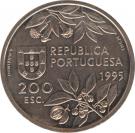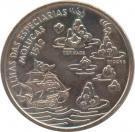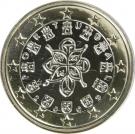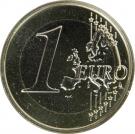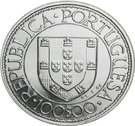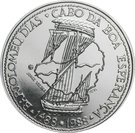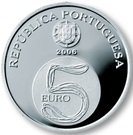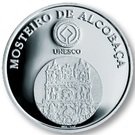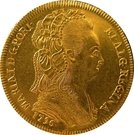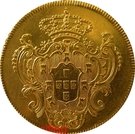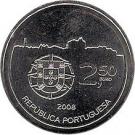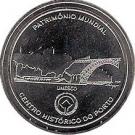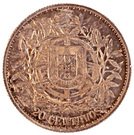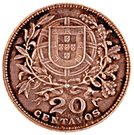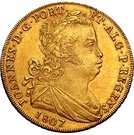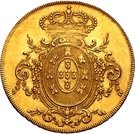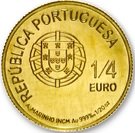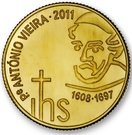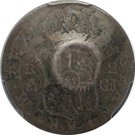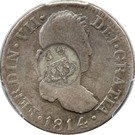Description:
Obverse
Portuguese coat of arms to the left, above a branch of clove tree (Syzygium aromaticum), below of nutmeg tree (Myristica fragrans). Those spices were search for by Europeans in the 16th century. Both originate from the Maluku Islands.
Reverse
Ship and Maluku Islands, volcanic archipelago among which the influential Ternate and Tidore kingdoms. The archipelago was named "Spice Islands"
Related Coins
1 Euro (2nd map)
Country: Portugal / Denomination: 1 Euro
1 EUR = 1.17 USD
Year: 2008-2018 / Material: Bi-Metallic Copper-nickel clad Nickel center in Nickel-brass ring
100 Escudos (Bartolomeu Dias; Palladium)
Country: Portugal / Denomination: 100 Escudos
(100 PTE)
Year: (1988) / Material: Platinum (.999)
5 Euro (World Heritage - Monastery of Alcobaça; Proof issue)
Country: Portugal / Denomination: 5 Euro
5 EUR = 5.83 USD
Year: 2006 / Material: Silver (.925)
Escudo - Maria I
Country: Portugal / Denomination: 1 Escudo = 1600 Réis
(1600)
Year: 1789-1796 / Material: Gold (.917)
7½ Euro (Sport Heroes - Rosa Mota; Gold)
Country: Portugal / Denomination: 7½ Euro
7.5 EUR = 8.75 USD
Year: 2018 / Material: Gold (.999)
2½ Euro (World Heritage - Porto)
Country: Portugal / Denomination: 2 1/2 Euro
2.5 EUR = 2.92 USD
Year: 2008 / Material: Copper-nickel
20 Centavos (Pattern)
Country: Portugal / Denomination: 20 Centavos
(0.20 PTE)
Year: / Material: Silver (.835)
Escudo - João Prince Regent
Country: Portugal / Denomination: 1600 Réis = 1 Escudo
(1600)
Year: 1805-1807 / Material: Gold (.917)
¼ Euro (António Vieira)
Country: Portugal / Denomination: 1/4 Euro
0.25 EUR = 0.29 USD
Year: 2011 / Material: Gold (.999)
300 Réis (Countermarked issue over 2 Reales - Fernando VI; Spain)
Country: Azores (Azores-Real)
(Portugal) / Denomination: 300 Réis
(300)
Year: (1887) / Material: Silver (.833)

